ARTISTIC VOICES - Interview with Feteh Khiari and Houcem Bouakroucha (IN SITU supported artists)
As part of its new project, CS VOICES, Circostrada aims to continue and deepen the synergies established with fellow institutions and European peers during the previous project, CS BODY/IES, through the publication of an article written by artists who have received support via an ARTCENA, circusnext, IN SITU or Perform Europe scheme.
This time, discover the work of Feteh Khiari and Houcem Bouakroucha, two Tunisian contemporary dancers supported by IN SITU PLATFORM, a four-year EU-funded programme that identifies and supports 200 emerging artists creating in public space and unconventional venues. In this interview, the duo share their efforts to expand audiences for the arts in public spaces and to challenge societal norms in Tunisia and beyond. An opportunity to start discovering Tunisia’s artistic scene ahead of the 2027 Circostrada Annual General Meeting.
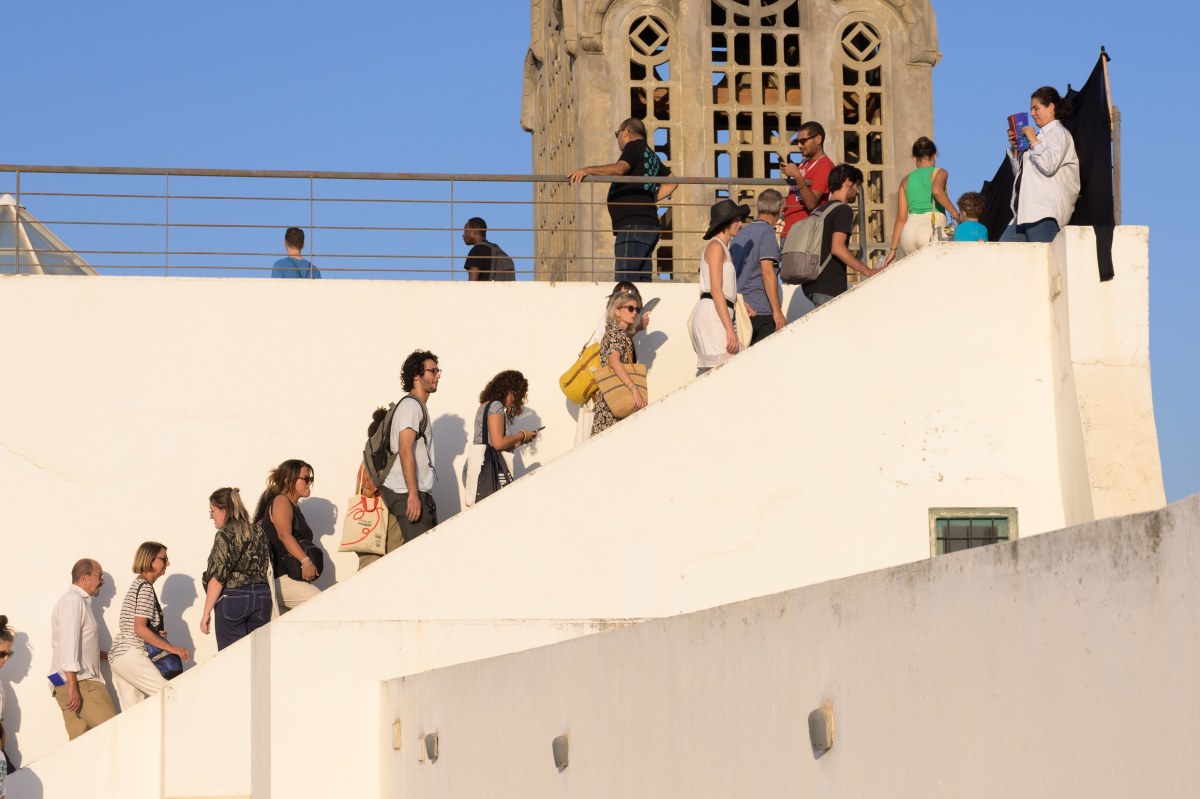
Can you tell us more about your individual and collective artistic journeys?
We are both coming from the hip hop scene. We started as Bboys1 before turning to contemporary dance and working with Tunisian and international choreographers. I, Houcem, studied English, while Feteh studied scenography, and at the same time, we were part of Sybel Ballet Theatre, performing and learning on stage.
Our journeys are similar, yet different. We’ve accumulated different experiences from a shared path that shaped our voices. Since our first collaboration, we’ve built a practice rooted in questioning norms and exploring cultural tensions. Our work is site-sensitive and grounded in improvisation, allowing space and body to affect each other.
As Tunisian artists, we draw inspiration from traditional rhythms and rituals, but also from the unstable, distorted ways culture shows up today. It’s our way to resist how it’s packaged and exported and to dig into what’s left unsaid. Our practice doesn’t stop at dance. We’re shaped by a network of skaters, visual artists, and musicians who helped us see things through different lenses.
Your choreography Bon Deuil2, presented during the last edition of the DreamCity Biennale festival, unfolds in a rooftop setting within Tunis’s medina. How did this distinctive urban texture shape the physical dynamics of your work?
The rooftop setting in the medina of Tunis deeply shaped the physical and emotional dynamics of Bon Deuil. The choice of this elevated, open-air space was not just logistical, it was symbolic. Rooftops in the medina are traditionally private, intimate spaces, yet they overlook the dense and chaotic fabric of the city. This duality mirrored the core theme of the piece: the tension between personal grief and collective memory.
Physically, the rooftop challenges our bodies, it’s uneven, unstable, exposed to wind, sun, and the distant sounds of life continuing below. Navigating that instability became part of the choreography, embodying the emotional imbalance that accompanies mourning. We embraced the vulnerability of performing in such a space, where nothing could be hidden or controlled, as a metaphor for the rawness of loss.
At the same time, the rooftop offered a vertical rupture, a kind of escape from the ground, from routine, from the weight of history. It allowed us to imagine mourning not just as an end, but as a passage. From this height, grief could breathe, expand, and perhaps begin to transform into something else: resilience, memory, celebration. The city became a witness, and the rooftop a ritual site where we could reclaim space for collective healing.
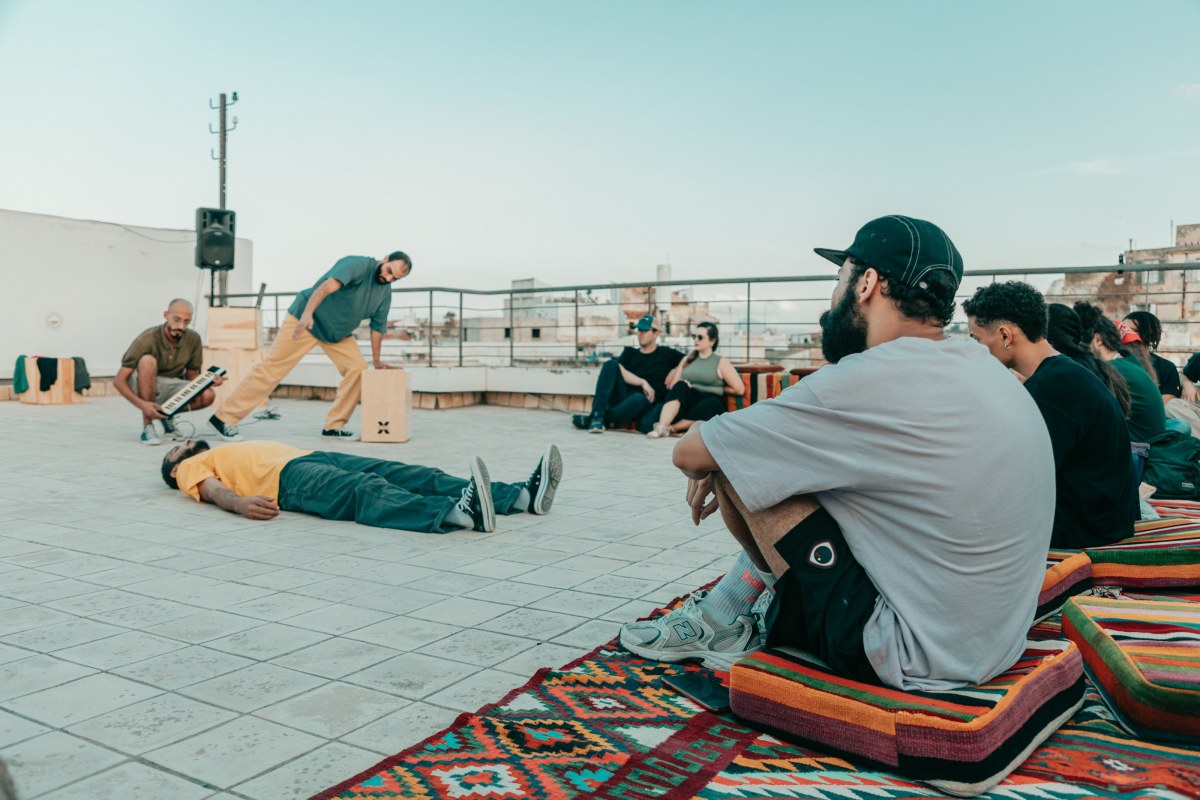
In this piece, the interaction—or distance—between you and the audience seems intentional. What kinds of reactions were you aiming to unlock?
When we decided to create our first project, Bon Deuil!!!, we were at a pivotal moment in our careers. We felt torn between the work we were doing with other artists and the personal questions we were carrying, about the world, about Tunisia, and about our place within both as artists and citizens.
From the beginning, we knew this project needed to reflect who we truly are. It had to be grounded in our lived experiences during the turbulent period between the Tunisian revolution and the COVID-19 pandemic. The rooftop space we chose carried within it all the layers, political, economic, and social, that we wanted to address. It became more than just a stage; it was a witness to a complex and often painful chapter in our country’s history.
The response from the audience was immediate and genuine. The informal rooftop setting made them feel at ease, encouraging open conversations after each performance. These exchanges gave us precious insights and deepened the meaning of the work.
We were fortunate to perform for six consecutive days. That continuity created an unexpected sense of intimacy, some audience members returned night after night. By the end, it became a shared ritual. I used to close each evening with a simple phrase: “See you tomorrow.” And surprisingly, for many, that became true.
Your latest project, Guerret el Anz3, continues to explore the paradoxical traits and struggles in contemporary Tunisian society. How does working in public space — where the social, political, and symbolic layers of the city are constantly at play — shape the way you construct these tensions on an artistic and emotional level?
Public space in Tunisia is not a safe space. It’s restricted by laws, authority, and social expectations. We often feel like we don’t fully have the right to exist in it freely. That’s why we believe it’s important to reclaim it.
With Guerret el Anz, a project we’re currently working on, we don’t just want to perform in public space, we want to transform it and affect it. We’re questioning how it’s used, who it belongs to, and what kind of expressions are allowed to happen there.
Our goal is also to shift how people see public space. Can it hold art, vulnerability, reflection, not just traffic, control, or routine? We want to show that something else can emerge in those spaces.
This shapes our artistic choices. The space isn’t just a setting, it’s part of the subject. It influences how we build the piece, how we place the audience, and how we deal with exposure, risk, and intimacy.
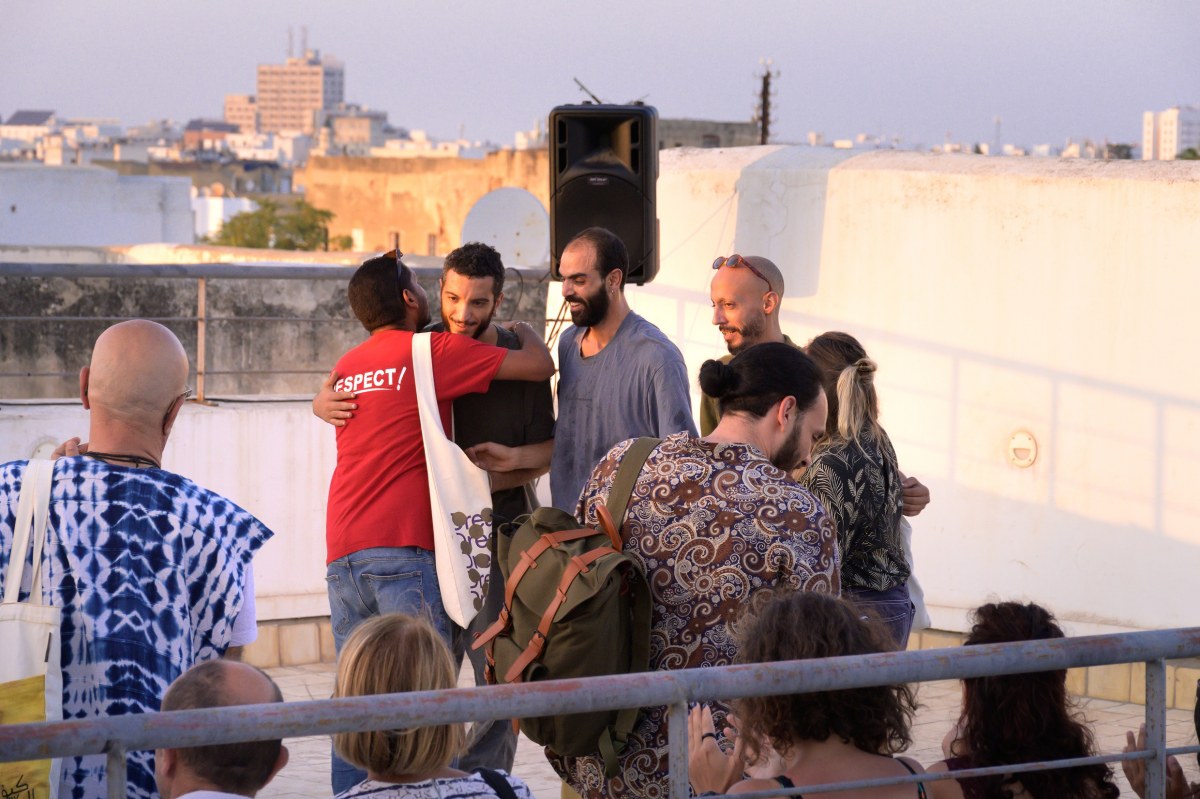
How could this performance engage in dialogue with other territories through a platform like IN SITU4? What makes these international connections meaningful or necessary for your artistic approach?
Platforms like IN SITU are important because they allow our work to travel and enter into dialogue with different territories, socially, culturally, and spatially. Although our artistic practice is rooted in Tunisia, the themes we explore, such as memory, resistance, identity, and how bodies reclaim space, are not specific to one place. They resonate across borders in different ways.
What makes these international connections meaningful is the opportunity to engage with new contexts, not just by showing the work, but by allowing it to shift in response to each place. The architecture, the energy of the space, and the community around it all become part of the experience. It challenges us to stay open and responsive, rather than fixed in one way of doing things.
For us, it’s not about exporting a ready-made performance, it’s about building encounters. We’re interested in how our questions as artists can meet the questions and realities of others. That kind of exchange allows for mutual reflection and growth. It keeps the work alive and helps us rethink how we position ourselves in the world as artists and citizens.
1 B-boying or Breaking, also called Breakdancing, is a style of street dance that originated among African-American and Puerto Rican youths in New York City during the early 1970s.
2 Good Mourning: The phrase carries poetic undertones, since "mourning" is not usually associated with something "good."
3 "Guerret El Anz" (literally The Cold of the Goat) is an Amazighan expression referring to a short, intense wave of cold weather that occurs in late February. It is believed that this cold is so harsh that even the goat, considered a hardy animal, struggles to endure it.
4 IN SITU is the European platform for artistic creation in public space. It is led by Lieux publics, European and national centre for artistic creation in public space, located in Marseille (FR). IN SITU PLATFORM is a four-year programme running from 2025 to 2028 that aims to identify and support 200 emerging artists. It proposes an innovative and efficient support platform to develop artistic creations at the European level in public spaces and non-conventional venues.
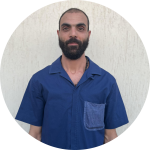
Born in 1990, Feteh Khiari is a multidisciplinary artist, dancer, performer, and set designer. He began in hip hop and street art before joining the Centre Méditerranéen de Danse Contemporaine in 2008 and Syhem Belkhoudja’s Sybel Ballet Théâtre in 2009. Feteh has worked with renowned companies and choreographers, including Radhouan El Meddeb, Hamdi Dridi, Kabinet K, Radhouane Mriziga, and Selim Ben Safia. He also participated in the Dancing Around the World project led by Nejla Yatkin and became a trainer in Ness el Fen’s Fabrica Danse program. His latest project is Bon Deuil! with Houcem Bouakroucha and Ayoub Bouzidi.
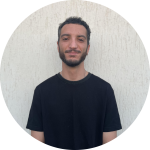
Began dancing at 14 as a Bboy, discovering contemporary dance through the Centre Méditerranéen de Danse Contemporaine. He became a performer with Syhem Belkhodja’s Sybel Ballet Théâtre and has since appeared at major festivals such as Avignon, Tanz in August, and Roma Europa, working with choreographers like Radhouane El Meddeb and Hamdi Dridi. Drawing from his extensive experience, Houcem now teaches workshops while creating his own projects, including Bon Deuil! with Feteh Khiari and Ayoub Bouzidi.



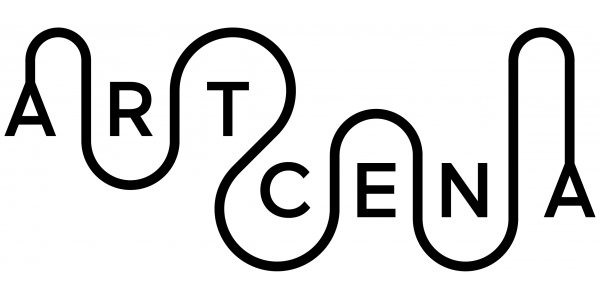

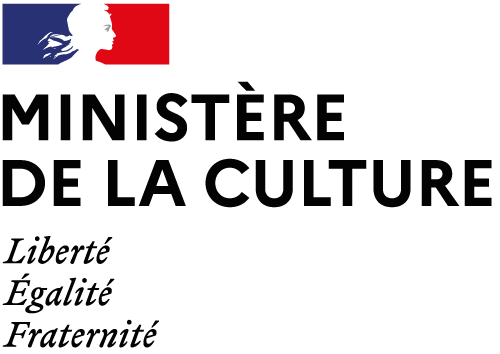
écrivez-nous : infocircostrada@artcena.fr